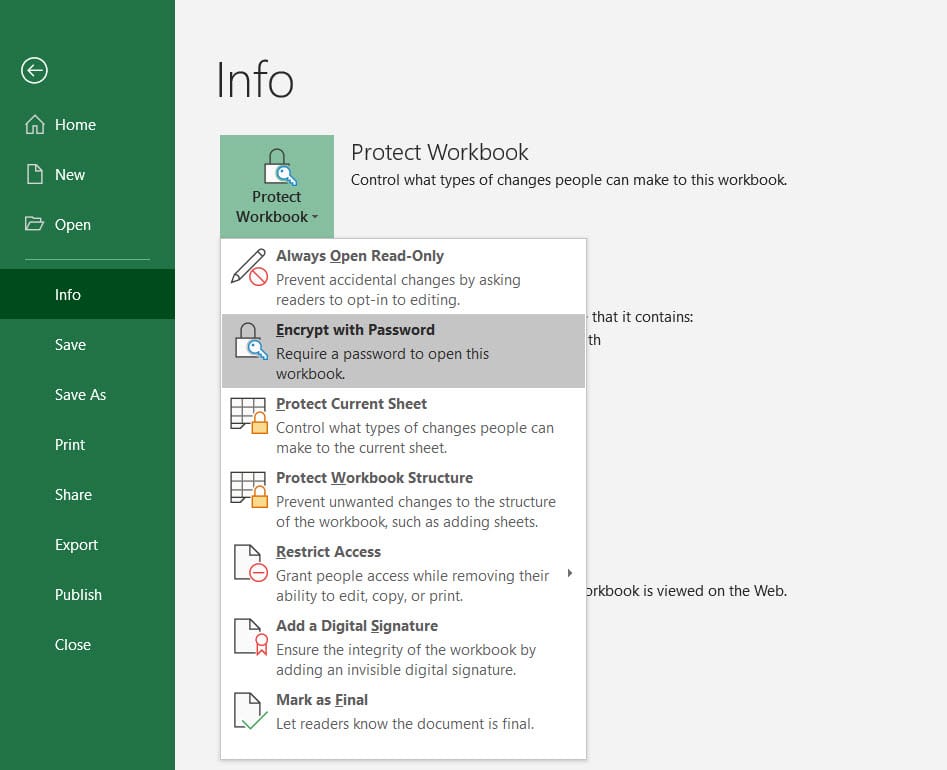Password Protect Excel Sheet: Easy Steps and Tips

Protecting your Excel spreadsheets with passwords is a fundamental step in securing sensitive information, ensuring data integrity, and controlling who can access or modify your data. Whether you're an individual managing personal finances or a business safeguarding proprietary information, Excel's password protection features are indispensable. Let's dive into the steps for password-protecting your Excel sheets effectively.
Why Should You Password Protect an Excel Sheet?

Before we delve into the how, let’s explore the why:
- Security: Prevent unauthorized access to your sensitive data.
- Data Integrity: Ensure that your data remains unaltered by unintended changes.
- Collaboration: Control permissions when sharing Excel files with colleagues or external partners.
Steps to Password Protect an Excel Sheet

Here’s a straightforward guide on how to apply password protection to your Excel sheets:
1. Open Your Excel Workbook

Start by opening the workbook you wish to protect.
2. Navigate to the “Review” Tab

In the Excel Ribbon, click on the “Review” tab. This tab contains tools for reviewing and protecting your document.
3. Click on “Protect Sheet”

Under the Review tab, you’ll find options to protect various aspects of your workbook. Click on “Protect Sheet” for individual sheet protection or “Protect Workbook” for broader protection. Here, we’ll focus on protecting a single sheet:
4. Set the Password

A dialog box will appear. Here, you can:
- Check the elements you want to allow users to do even with the sheet protected (like selecting locked cells or formatting cells).
- Enter a password in the Password to Unprotect Sheet field. This password will be required to unlock the sheet for editing.
🔒 Note: Remember your password as there’s no way to recover it if lost!
5. Confirm Password and Apply Protection

After setting your password, Excel will prompt you to re-enter it for confirmation. Enter it again and click “OK”. Your Excel sheet is now protected.
6. Test the Protection

Try to modify something in the protected sheet. If the password protection is working, Excel will ask for the password before allowing changes.
7. Protecting the Entire Workbook

For protecting the structure of the workbook (to prevent adding, deleting, hiding, or unhiding sheets), use the “Protect Workbook” option from the same “Review” tab.
Tips for Effective Password Protection

Here are some tips to make your password protection more effective:
- Use Strong Passwords: Include a mix of upper and lower case letters, numbers, and special characters. Avoid easily guessable passwords.
- Keep Passwords Secure: Store your passwords in a secure password manager rather than writing them down where others can find them.
- Share Passwords Wisely: If you need to share the password, do so securely. Perhaps use encrypted messaging or in-person communication.
When to Use Workbook Protection Over Sheet Protection

Excel provides two levels of protection:
- Sheet Protection: Protects the content of individual sheets. This is useful for shared worksheets where you want to control what changes users can make.
- Workbook Protection: Protects the structure of your workbook. Use this when you want to prevent users from inserting, deleting, renaming, or reordering sheets.
Managing Multiple Passwords

If you’re working with multiple protected sheets or workbooks:
- Consider using a password management tool or a secure note app to keep track of your passwords.
- Try to maintain a consistent password policy across different sheets within the same project or environment.
Unlocking or Changing Passwords

Should you need to change or remove a password:
- Go back to the “Review” tab and click “Unprotect Sheet” or “Unprotect Workbook.”
- Enter the current password to make changes.
- To change the password, repeat the initial steps for protection but enter a new password.
By following these steps and tips, you've significantly enhanced the security of your Excel documents. Protecting your Excel sheets is not just about preventing unwanted changes but also about maintaining the confidentiality of your data. Remember, password protection is one layer of security; for highly sensitive documents, consider using additional security measures like encryption or secure cloud storage with access control.
Can I recover an Excel password if I forget it?

+
Unfortunately, Excel does not provide a built-in password recovery option. If you forget the password, you’ll need to use third-party software or potentially lose access to the protected content.
Is password protection enough to secure sensitive data?

+
While password protection is a good start, for highly sensitive data, consider using encryption, secure storage solutions, and limiting physical access to devices that contain sensitive information.
How often should I change the password on my protected Excel sheets?

+
It’s advisable to change passwords regularly, especially if shared with others or if you suspect it might have been compromised. However, frequency can depend on the sensitivity of the data and company policies.